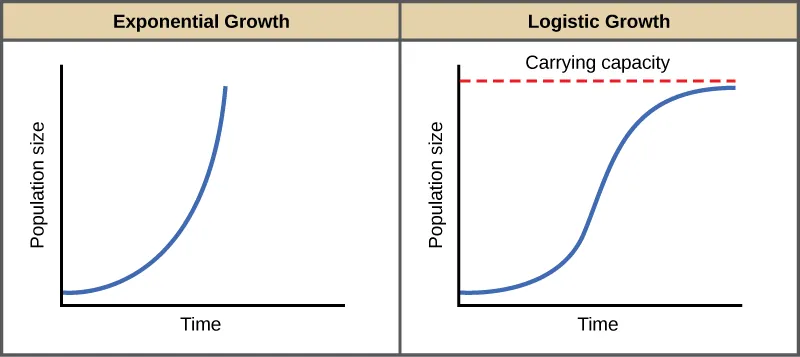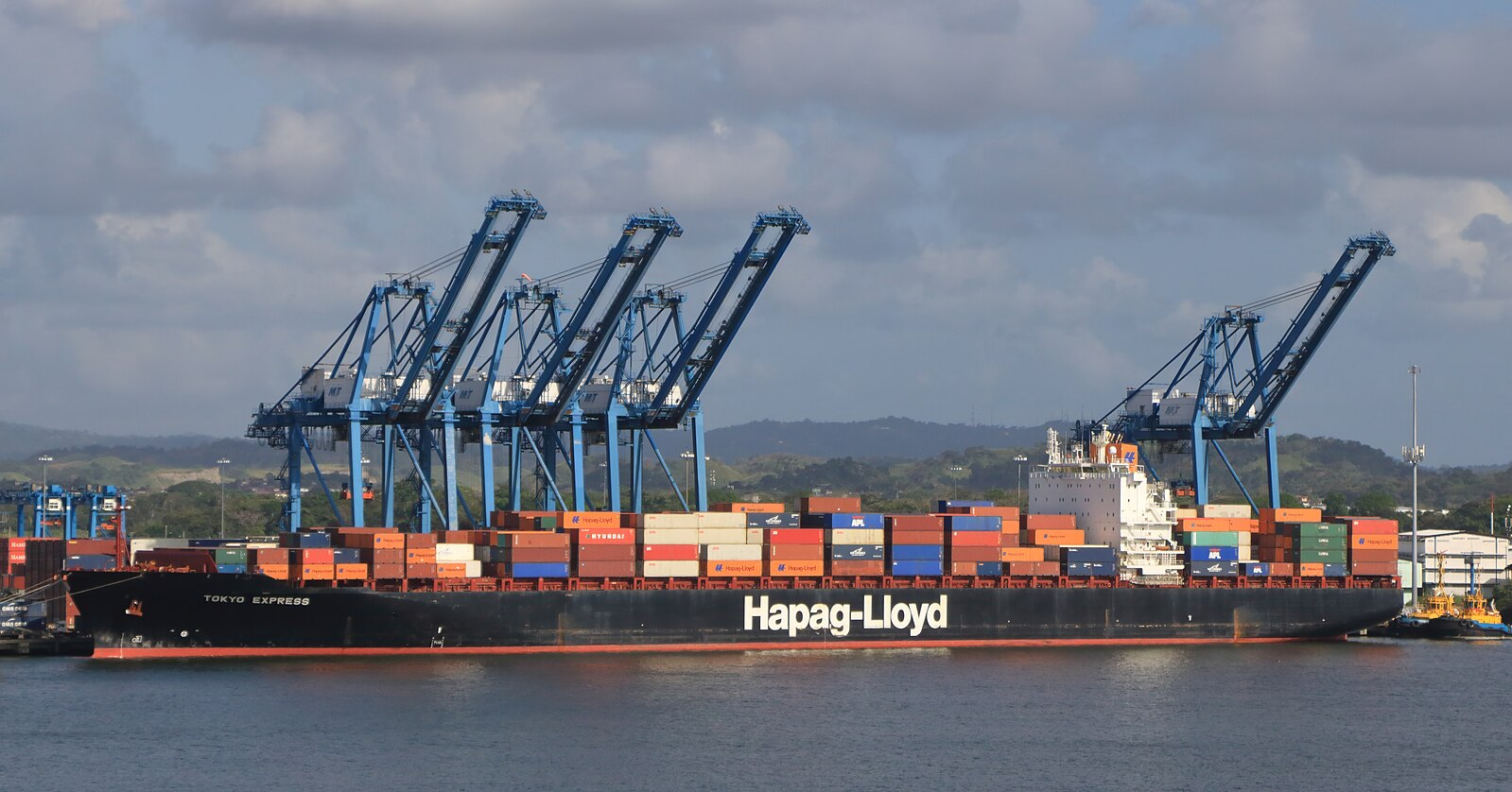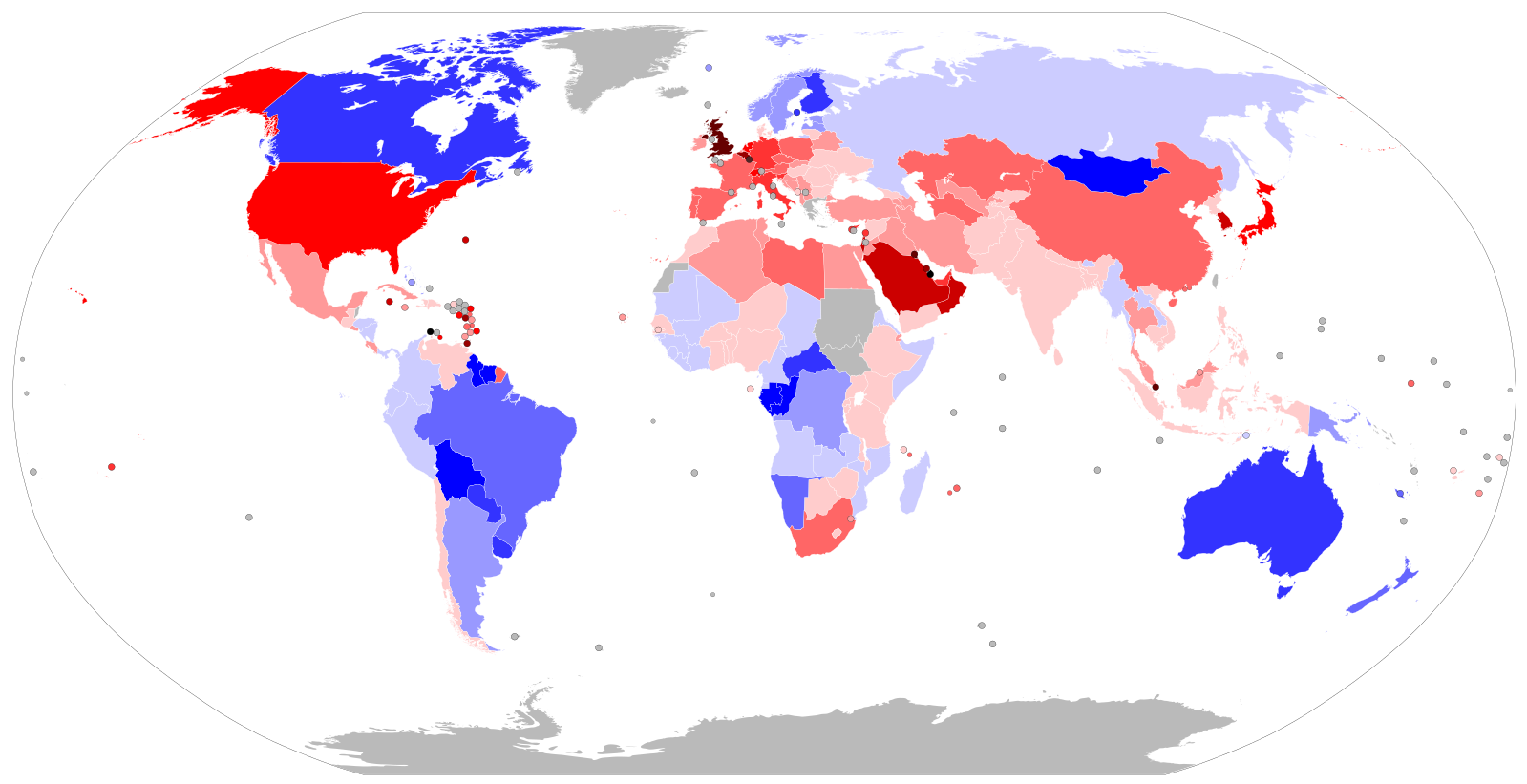IB Syllabus focus:
‘Human populations have reduced natural limits via technology, predator removal, and resource mobilization, degrading environments. Estimating human carrying capacity is difficult because niches and consumption change rapidly and resources can be imported.’
Humans have dramatically altered their relationship with natural limits through technological advances, resource exploitation, and global trade. This subtopic explores carrying capacity, human influence, and measurement challenges.
Understanding Human Carrying Capacity
Definition and Concept
Carrying capacity is the maximum population size of a species that an environment can sustain indefinitely with available resources. For humans, this is far more complex.
Carrying Capacity: The maximum number of individuals a given environment can support without degrading resource availability over time.
While ecosystems for other species stabilise through density-dependent factors like predation and disease, humans have consistently pushed these natural boundaries.

Logistic (S-shaped) versus exponential (J-shaped) population growth with carrying capacity (K) indicated. This visual clarifies how negative feedbacks normally stabilise populations and what “exceeding K” conceptually means for humans. Diagram shows general population dynamics applicable to human populations. Source.
Human Alterations to Natural Limits
Human societies have modified carrying capacity in ways that distinguish them from other species:
Technological innovation: Improved agriculture, irrigation, synthetic fertilisers, and genetic modification increase food production.
Predator removal: Humans have eliminated or reduced natural predators, removing a natural form of population regulation.
Resource mobilisation: Trade networks, global transportation, and energy-intensive resource extraction allow populations to thrive in places otherwise unable to sustain large numbers.
These adjustments often provide short-term population growth but at the cost of long-term environmental stability.
Environmental Degradation from Exceeding Limits
Resource Overuse
When humans expand beyond ecological capacity, resource consumption accelerates:
Deforestation reduces biodiversity and carbon storage.
Overfishing depletes marine populations faster than recovery rates.
Freshwater scarcity emerges where consumption exceeds replenishment.
Waste and Pollution
Human activities generate waste beyond natural absorption capacity. Examples include:
Greenhouse gases intensifying climate change.
Plastic pollution harming marine ecosystems.
Eutrophication from fertilisers reducing aquatic oxygen levels.
The degradation caused by overshooting natural limits demonstrates the ecological costs of exceeding carrying capacity.
Estimating Human Carrying Capacity
Challenges in Measurement
Unlike other species, human carrying capacity cannot be defined by fixed environmental constraints. Several factors complicate estimation:
Changing niches: Humans adapt their niches through technology, allowing survival in deserts, tundras, or urban megacities.
Variable consumption: Individuals in developed countries may consume 10–20 times more resources than those in developing regions.
Resource imports: Global trade allows nations to exceed local resource limits, masking true ecological constraints.

A container ship entering the Panama Canal, a major artery of global trade. Trade lets populations access resources beyond local ecosystems, temporarily masking local carrying-capacity limits. Real-world context links imports to population sustainability. Source.
Ecological Footprint and Biocapacity
One useful tool is the ecological footprint, which measures the biologically productive land and water required to support a population’s consumption.
Ecological Footprint: The area of biologically productive land and sea needed to supply resources and absorb waste for a given population.
When a population’s footprint exceeds available biocapacity (the capacity of ecosystems to regenerate), overshoot occurs. Humanity as a whole has already exceeded Earth’s biocapacity.

World map shaded by ecological deficit (where ecological footprint exceeds biocapacity) and by reserve. It illustrates overshoot geographically and implies reliance on trade or ecosystem depletion. Country-level detail exceeds the syllabus’ minimum but strengthens the concept of global overshoot. Source.
Human Carrying Capacity and Feedback Loops
Positive and Negative Feedback
Negative feedback (self-regulation) is seen in density-dependent controls such as disease spread in crowded populations.
Positive feedback can accelerate overshoot, such as rising demand for fossil fuels reinforcing climate change impacts.
Humans often bypass negative feedback through medical advances, food production, and trade, but these same actions reinforce positive feedback loops of environmental damage.
Boom and Bust Dynamics
Some civilisations have historically collapsed after overshooting carrying capacity. For example:
The Easter Island society declined after deforestation eliminated vital resources.
The Maya civilisation was destabilised by agricultural pressures and drought.
These examples reveal that exceeding ecological limits can lead to rapid decline, despite short-term gains.
The Role of Technology and Global Systems
Expanding Limits
Agricultural revolutions (Green Revolution, mechanisation, fertilisers) increased global food output.
Medical advances reduced mortality and increased life expectancy.
Energy use from fossil fuels extended carrying capacity by providing abundant power.
Creating New Limits
Technological expansion also creates new constraints:
Climate change from fossil fuel dependency.
Soil degradation from intensive farming.
Resource inequality where access to technology is uneven.
Thus, while technology extends carrying capacity temporarily, it can degrade the very systems on which it depends.
Estimating Future Trends
Global Population Growth
Human population growth is predicted to stabilise later this century, but consumption levels continue to rise, meaning carrying capacity is stressed even without population increase.
Uncertainty in Projections
Estimating carrying capacity is difficult because:
New technologies may expand limits.
Behavioural shifts, such as sustainable diets, could reduce pressures.
Global inequalities mean that one region’s carrying capacity may differ significantly from another’s.
Future estimates depend on balancing human demand with ecosystem resilience.
Key Takeaways for IB Students
Humans differ from other species by constantly redefining carrying capacity through innovation and trade.
Environmental degradation results when population overshoots ecological limits.
Estimating human carrying capacity is difficult because consumption patterns, niches, and imports change over time.
Tools like the ecological footprint and biocapacity provide insight but do not capture the full complexity of global human systems.
FAQ
Cultural behaviour shapes how resources are used and distributed. For example, diets rich in meat require more land and water than plant-based diets, reducing effective carrying capacity.
Cultural values around consumption, waste, and efficiency can either increase sustainability or intensify overshoot. Shifts in social norms, such as reducing food waste, can help extend carrying capacity.
Regions can exceed local carrying capacity by importing food, water, and energy through global trade. This creates the illusion of sustainability.
Such reliance increases vulnerability to international supply chain disruptions, political instability, or rising costs of transport and fuel.
Urbanisation can increase efficiency by concentrating infrastructure, reducing per capita land use, and facilitating resource sharing.
However, dense urban centres often depend heavily on external resource imports, meaning they cannot sustain themselves without vast hinterlands or global networks.
Technology can extend limits by improving yields, creating substitutes, and enhancing efficiency. Examples include desalination, vertical farming, and renewable energy.
Yet all technologies rely on energy and raw materials. Without sustainable inputs, new technologies may only delay ecological limits rather than remove them entirely.
High-income countries consume far more per person than low-income countries, straining global ecosystems disproportionately.
Wealthier nations create ecological deficits but offset them with imports.
Poorer nations often bear the environmental consequences, such as deforestation and soil degradation, to supply global markets.
This uneven distribution complicates efforts to define a single global carrying capacity.
Practice Questions
Question 1 (2 marks)
Define the term carrying capacity and explain why it is more difficult to estimate for humans compared to other species.
Mark scheme:
1 mark for correct definition: carrying capacity is the maximum population size that an environment can sustainably support without degrading resources.
1 mark for explanation: human carrying capacity is difficult to estimate because technology, global trade, and changing consumption patterns alter resource use and niches.
Question 2 (5 marks)
Discuss two ways in which humans have reduced natural limits on population growth, and explain how these actions may contribute to long-term environmental degradation.
Mark scheme:
Up to 2 marks for describing methods:
Technological innovation in agriculture, medicine, or energy use.
Removal of predators or diseases.
Resource mobilisation through trade and extraction.
Up to 2 marks for linking these actions to environmental degradation:
Overexploitation of resources (e.g., deforestation, overfishing).
Pollution and waste accumulation (e.g., greenhouse gases, plastics).
1 mark for synthesis: showing understanding that actions increase short-term carrying capacity but reduce long-term sustainability.

